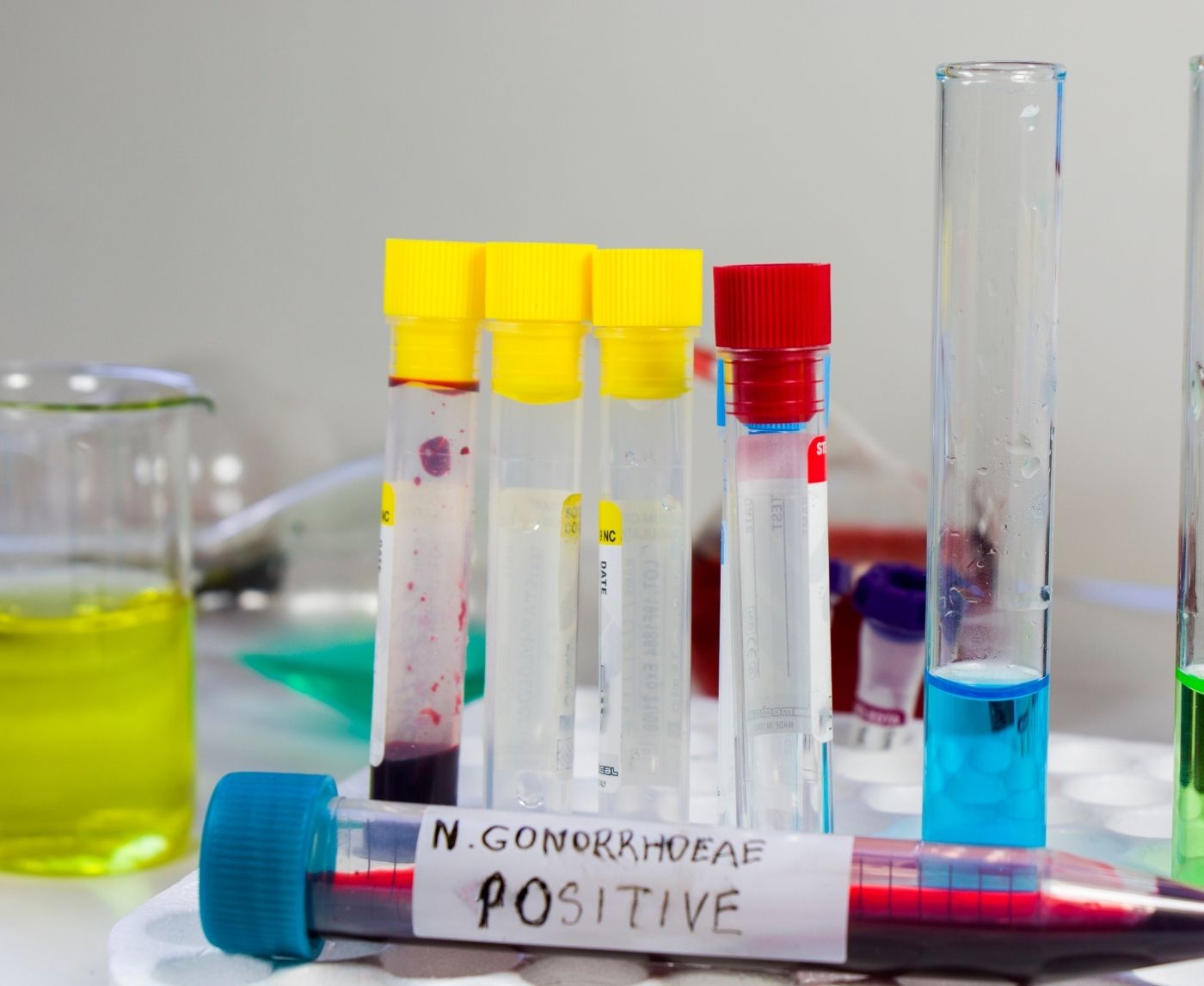Tested Negative, Still Infected? Why Super-Gonorrhea Is Hard to Catch
Quick Answer: If not treated, gonorrhea can make men infertile by causing inflammation, scarring, and blockages in the reproductive tract. This outcome can be avoided with early testing and treatment.
When Pain Isn’t the First Warning
Most men assume gonorrhea will announce itself with burning urination or obvious discharge. The truth is that symptoms can be faint, intermittent, or absent entirely. A man might dismiss mild irritation after sex or confuse slight swelling with a muscle strain. By the time pain or swelling in the testicles appears, the infection may already have reached the epididymis, the coiled tube where sperm mature, putting fertility at risk. This isn’t rare. Studies estimate that up to 10 percent of men with untreated infections develop complications like epididymitis, which can scar delicate tissue and block sperm pathways.
This is where the damage builds up in the silence. Gonorrhea can stay in the background, making it seem like you're getting better when really the bacteria are still climbing the reproductive tract. This is different from a fever or cough, which make you pay attention. For couples trying to get pregnant, this hidden progression becomes devastating months or years later when they have trouble getting pregnant and have to deal with questions they never thought they would have to.

People are also reading: New HIV Injection Lowers Risk by 96%, Here’s What to Know
The Science of Scarring and Blocked Pathways
What exactly turns a treatable infection into a threat against fatherhood? The biology comes down to inflammation. When gonorrhea bacteria spread to the epididymis, the immune system rushes in to fight. White blood cells flood the area, swelling builds, and the tender tube can become clogged. Even after the bacteria are cleared, the body’s repair process often leaves scar tissue. That scar tissue hardens like cement in a narrow pipe, disrupting sperm flow. In some men, both sides are affected, leaving sperm with nowhere to go.
Peer-reviewed studies have shown that these blockages can lead to obstructive azoospermia, a condition where sperm production is normal but none exit during ejaculation. In other words, the body still makes sperm, but the infection built walls they can’t pass. It’s a cruel paradox, one that could have been prevented by antibiotics had the infection been caught early.
Table 1. How untreated gonorrhea can progress toward infertility, depending on time and tissue involvement.
Jorge, 33, and his wife had been trying for a baby for over a year when routine fertility testing revealed his sperm count was zero. “I was confused, I never thought of myself as sick,” he later explained to a counselor. After more testing, doctors found old scarring in his reproductive tract, a telltale sign of a past gonorrhea infection. The news hit harder than he expected, not only because of the fertility diagnosis but because he had never realized an untreated STD from his twenties could ripple into his marriage a decade later.
This story mirrors what fertility specialists see in clinics worldwide: men surprised by the hidden consequences of untreated STDs. It’s a reminder that reproductive health isn’t only about sperm count or testosterone. It’s about infection history, early care, and honest conversations, factors often ignored until much later.
Busting the Myth: Gonorrhea Always Shows Symptoms
The myth that gonorrhea always announces itself with obvious symptoms leaves many men vulnerable. Research shows that as many as half of male cases may start without noticeable discomfort. This invisibility is why relying on “feeling fine” is risky. By the time swelling, fever, or sharp testicular pain sends a man to urgent care, infertility may already be in play. Silence doesn’t mean safety; it means danger is harder to catch.
The stigma around getting tested for STDs makes this worse. Men often stay away from clinics because they are afraid of being judged. They would rather deny their problems than get a diagnosis. But the stigma isn't fair. Millions of new cases of gonorrhea are reported each year, making it one of the most common STDs in the world. Getting tested is a responsible thing to do, not something to be ashamed of. To fight these myths, we need to change the way we think about testing and make it a normal part of taking care of ourselves, just like checking our blood pressure or cholesterol.
The good news: infertility from gonorrhea is preventable. Timely antibiotics clear the bacteria before permanent damage sets in. That makes testing the most powerful form of protection. At-home tests and clinic-based NAATs (nucleic acid amplification tests) can detect infections early, even before symptoms appear. The sooner treatment starts, the lower the risk of lasting complications.
A man who tests at two weeks after exposure and gets treatment may never face complications. A man who waits months, hoping mild discomfort fades, risks carrying bacteria into the very structures that matter most for fertility. This timing gap, between early detection and late diagnosis, often determines whether gonorrhea leaves a mark for life.
The Bigger Picture: STDs and Male Reproductive Health
When doctors talk about infertility caused by gonorrhea, they rarely isolate it from other sexually transmitted infections. That’s because coinfections are common, men exposed to gonorrhea are often at risk of chlamydia too. Both can inflame and scar the epididymis, and when combined, the damage escalates. Fertility specialists sometimes see men who cleared one infection while the other went unnoticed, leaving double the risk for obstruction. The medical term might be “synergistic pathology,” but in human terms, it’s two infections ganging up on your future plans for a family.
This bigger picture matters because untreated STDs aren’t just about the here and now. They are about the body’s long-term capacity to function as intended. A scar in the urethra, a blocked tube in the testes, or a chronic low-grade inflammation in the prostate can change reproductive health permanently. Every delay in testing makes these outcomes more likely, which is why doctors and public health advocates repeat the same message: test early, test often, and treat immediately.
Data That Connects the Dots
The numbers make the warnings more serious. The CDC says that there are almost 700,000 cases of gonorrhea reported in the US each year. The real number is probably higher because some people don't report their cases. Studies published in journals like Sexually Transmitted Diseases have shown that untreated infections can lead to a measurable increase in male infertility diagnoses. They estimate that 2 to 3 percent of male infertility cases may be directly linked to past gonorrheal infections. That may not seem like a lot, but it means that thousands of couples break up every year.
Another study in Fertility and Sterility highlighted that among men diagnosed with obstructive azoospermia, up to 15 percent had antibody markers showing prior exposure to gonorrhea. In other words, the infection left fingerprints inside their immune systems long after the bacteria were gone. These immune “memories” are one way doctors connect invisible past infections to present fertility struggles.
Table 2. Key data points connecting gonorrhea to measurable infertility outcomes in men.
When Denial Meets Stigma
The science is convincing, but stigma keeps many men away from testing. One thirty-five-year-old described how he delayed getting checked because he “didn’t want to walk into the clinic where everyone would know.” By the time his pain forced him there, he needed not just antibiotics but also months of fertility counseling. This fear of judgment is more damaging than the infection itself. Gonorrhea doesn’t wait for pride to pass; it works silently, leaving scars regardless of a man’s embarrassment.
It’s important to say this plainly: being diagnosed with gonorrhea does not make someone reckless, dirty, or unworthy. It makes them human. Sex is a normal part of life, and so are infections. What matters is how quickly someone responds, not whether they contracted an STD. A sex-positive lens reframes testing as care, not confession, a step toward health and dignity, not shame.
The Role of Partners and Prevention
Gonorrhea can make people infertile, but it usually affects couples, not just one person. When a couple finds out they are infertile, many of them feel angry or frustrated. Some couples stop talking to each other, while others fight about things that happened in the past. Instead of seeing gonorrhea as a personal failure, see it as a shared problem. Couples who work together on testing and treatment often find it less stressful and more helpful.
Prevention, of course, is the strongest safeguard. Condoms lower the risk of transmission, regular testing between partners keeps surprises at bay, and honest communication builds resilience. The stigma around buying condoms or asking a partner to test is minor compared to the long-term stakes of infertility. Prevention is not about mistrust, it’s about valuing the future enough to take steps in the present.

People are also reading: Is Oral Sex Safe? Why You Can Still Catch STDs Without Penetration
Case Study: The One Who Didn’t Feel Sick
Malik, 24, had no discharge, no pain, no fever. He tested for gonorrhea only because his girlfriend insisted after her own routine screening. The result shocked him: positive. Treatment was fast and effective, and doctors assured him his fertility was intact. What could have been years of silent damage ended as a near-miss story thanks to her insistence. Malik later admitted,
“I never would have tested on my own. I thought if nothing hurt, nothing was wrong.”
His story proves the myth-busting point: symptoms are not the gatekeepers of danger.
Testing Options That Protect Fertility
In today’s landscape, men no longer need to wait weeks for clinic appointments. At-home rapid tests, mail-in kits, and same-day lab testing give options for every comfort level. NAATs remain the gold standard for gonorrhea detection, offering near-perfect sensitivity. Rapid tests provide immediate peace of mind, and while they may require confirmatory lab testing, they still shorten the window between exposure and action.
By looking at different options, men can see how they can make testing fit their lives. A busy dad might choose a quick kit so he can test himself at home after his kids go to bed. If a college student wants results the same day, they might prefer the campus health center. A truck driver who is on the road may need a mail-in kit that was sent from a rest stop. Each pathway protects fertility by shortening the time it takes to get better, which is the most important factor in whether or not complications happen.
Table 3. Comparing testing methods for gonorrhea, balancing speed, privacy, and accuracy to meet different needs.
Whichever path men choose, the key is not waiting. Each day of delay is a day bacteria can spread further into the reproductive tract. The solution is not perfection, it’s action.
Do You Need to Retest? Here’s Why It Matters
Taking antibiotics to get rid of gonorrhea doesn't mean the story ends there. Doctors often suggest retesting, usually within three months, to make sure the infection is gone and to make sure you don't get it again. This step is very important for men who are worried about their fertility. Even after treatment works, inflammation can still affect sperm health for a short time. A man might think he's in the clear without a follow-up test, but problems that aren't too serious could still be brewing.
Consider Andres, 29, who was treated after testing positive but skipped his retest. Months later, persistent discomfort revealed that the infection hadn’t fully cleared. By then, imaging showed scarring in his epididymis. A simple retest could have caught the relapse before damage set in. His experience highlights why doctors and public health experts insist on follow-up care, it’s not bureaucracy, it’s protection for the future.
Treatment and Recovery: A Practical Lens
The treatment for gonorrhea itself is straightforward, typically a single dose of antibiotics like ceftriaxone. The challenge lies in timing. Early treatment resolves symptoms and prevents infertility; late treatment may cure the infection but cannot undo scar tissue already formed. That’s why fertility specialists emphasize urgency. The window between infection and irreversible damage can be surprisingly short in some men, especially if inflammation spreads aggressively.
Recovery also depends on lifestyle. Men who rest, hydrate, and avoid sexual activity until cleared reduce the chance of reinjury and reinfection. Those who resume sex too quickly or avoid partner testing risk passing bacteria back and forth, restarting the cycle. Effective recovery is less about the pills prescribed and more about respecting the process: healing requires both medical treatment and behavioral care.
Sex Positivity as a Shield, Not a Weakness
People often see losing fertility from gonorrhea as a punishment for having sex. This way of framing things is wrong, harmful, and not helpful. Sex is not the problem; silence and shame are. A sex-positive approach sees testing as a way to give people power, not shame them. It focuses on pleasure and partnership, reminding men that taking care of their sexual health makes their sex lives better, not worse.
Men are more likely to get help early when clinics and testing services use language that includes everyone. Partners can talk about testing without judging each other, which helps stop infections from spreading. When stigma is broken down, it becomes normal, not unusual, to get an early diagnosis. In that setting, infertility resulting from gonorrhea transforms into an uncommon complication rather than a frequent occurrence.
What If You Already Struggle with Fertility?
Not every man learns about the effects of gonorrhea until he is told he can't have children. If you already have blocked tubes or a low sperm count, the best way to move forward is usually with assisted reproductive technologies. Couples can still get pregnant with in vitro fertilization (IVF) even if their natural pathways are damaged. This is because sperm extraction gets around blockages. These solutions are costly and emotionally draining, yet they demonstrate that infertility due to gonorrhea need not signify the cessation of familial aspirations.
But no high-tech solution can completely take away the pain of infertility that could have been avoided. Men frequently articulate frustration, regret, or anger due to being misinformed or uninformed. Counseling can help couples deal with these feelings by reminding them that infertility is a medical problem, not a moral one. The story isn't about blame; it's about strength: moving on despite what happened in the past.

People are also reading: Is Oral Sex Safe? Why You Can Still Catch STDs Without Penetration
FAQs
1. Can gonorrhea really make a man infertile?
Sadly, yes. It doesn’t happen to everyone, but untreated gonorrhea can leave scars in the tubes that carry sperm. Think of it like traffic suddenly stopped by a cement barricade, sperm is still being made, but it can’t get where it needs to go. That’s how infertility sneaks in.
2. How fast can gonorrhea mess with fertility?
There’s no countdown clock on your body, but damage can start within weeks if the infection spreads into the testicles or epididymis. Some guys shrug off a little ache or swelling, not realizing that each day of delay raises the odds of lasting problems. It’s not about panic, it’s about not letting time do the bacteria’s dirty work.
3. If I treat it, am I in the clear?
Usually, yes. Early antibiotics wipe out gonorrhea before scar tissue forms. If scarring has already set in, no amount of medicine can undo it. That’s why speed matters. Think of treatment as hitting “pause” on damage, the sooner you press it, the less gets recorded.
4. Do all men with untreated gonorrhea lose fertility?
No, not at all. Some men dodge the worst complications. But here’s the catch: you don’t know which side of the coin you’re on until it’s too late. Betting on luck with your future family isn’t exactly a smart gamble.
5. Does gonorrhea change sperm quality?
It can. Inflammation sometimes lowers sperm count or slows their movement. It’s like giving your swimmers ankle weights. If treatment comes quickly, they usually bounce back. If not, the damage may stick around.
6. What symptoms should I watch for in my testicles?
Swelling, tenderness, or that heavy, achy feeling on one side are red flags. Some men even describe it as “feeling like I got kicked, but the pain never went away.” If that’s you, don’t Google it for a week, get checked now.
7. Are condoms enough to stop gonorrhea?
Condoms slash the risk dramatically, but they aren’t a perfect shield. Gonorrhea can infect areas condoms don’t cover, especially during oral sex. So yes, use them, they’re heroes, but don’t use them as an excuse to skip testing.
8. Can I really trust at-home gonorrhea tests?
You can. The best ones use the same science labs do, just with a swab or urine sample you mail in. Rapid kits give faster answers, though sometimes they need confirmation. For guys who hate waiting rooms, they’re a lifesaver, and way better than guessing.
9. Can doctors tell if I had gonorrhea years ago?
Not directly. Once the infection’s gone, it’s gone. But doctors can sometimes spot immune “footprints” from the past, especially if infertility is being investigated. It’s like seeing tracks in the snow, you know something was there even if it’s long gone.
10. What’s the first thing I should do if I suspect gonorrhea?
Stop having sex, line up a test, and make sure your partner(s) do the same. The sooner you treat it, the less chance it has to complicate your health or your future. Don’t wait for the “perfect” moment, it’s never going to get easier than right now.
You Deserve Answers, Not Assumptions
It's sad but true that gonorrhea can cause male infertility. You don't have to be infertile. Men who get tested early, get treated quickly, and get tested again when told to do so protect their relationships and their fertility. Shame and silence only make things worse. Knowledge and action, on the other hand, protect the future.
Don't let chance decide your fertility. With this discreet at-home combo STD test kit, you can check for gonorrhea and other common infections in privacy and get results in a few days. Take charge today to protect your health, your future, and your life.
How We Sourced This: This guide was put together from about fifteen trustworthy sources, including medical experts, peer-reviewed studies, and stories from real life. We looked at CDC surveillance data, fertility journals, and clinical guidelines from places like the Mayo Clinic and the World Health Organization. We also used lived experience reporting to show the human side of infertility caused by gonorrhea.
Sources
1. Mayo Clinic – Gonorrhea: Symptoms and Causes
2. WHO – Sexually Transmitted Infections Fact Sheet
3. Planned Parenthood – Gonorrhea Overview
5. Next Steps After Testing Positive for Gonorrhea or Chlamydia | CDC
6. Gonorrhea — Symptoms & Causes | Mayo Clinic
About the Author
Dr. F. David, MD is a board-certified infectious disease specialist focused on STI prevention, diagnosis, and treatment. He blends clinical precision with a no-nonsense, sex-positive approach and is committed to expanding access for readers in both urban and off-grid settings.
Reviewed by: Dr. L. Hargrove, PhD, MPH | Last medically reviewed: September 2025
This article is for informational purposes and does not replace medical advice.







